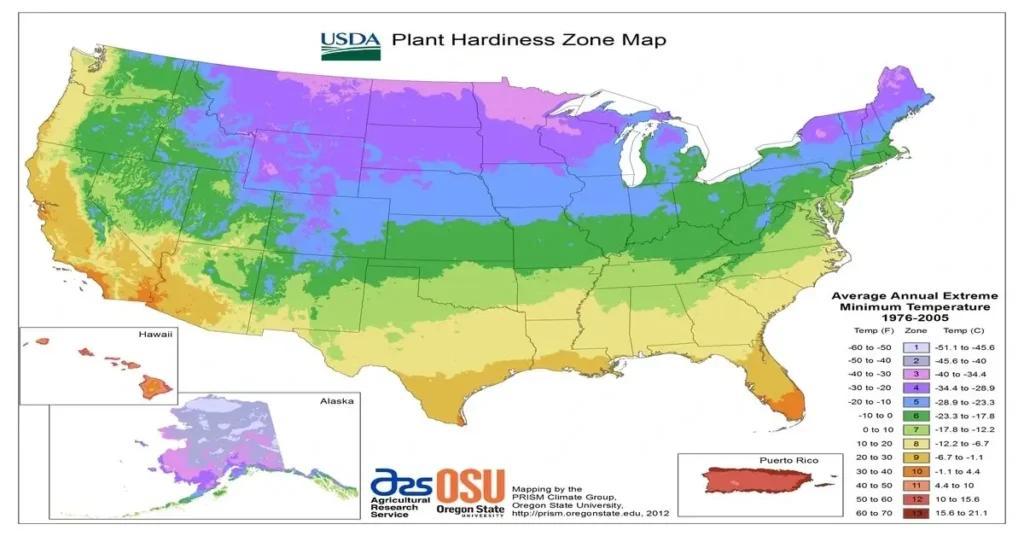The secret to a thriving garden often lies in understanding the climate in which your plants can grow. This guide will explain USDA Hardiness Zones, which are crucial to a gardener’s ability to choose suitable plants for their garden.
What is a USDA Hardiness Zone?
USDA Hardiness Zones are divisions on the USDA Plant Hardiness Zone Map developed by the United States Department of Agriculture. This map aids gardeners and growers in selecting plants most likely to thrive in their location.
The hardiness zone system relies on the average annual minimum winter temperature, divided into 10-degree Fahrenheit zones. These zones range from Zone 1, the coldest, to Zone 13, the warmest. These zones allow growers to determine which plants can survive in their gardens.
The Importance of Understanding Hardiness Zones
Understanding hardiness zones is crucial. It ensures the success of the chosen plants in your garden, as different plants require different climatic conditions to grow. By checking plant tags and using the USDA hardiness zone map, you can select the right plants for your garden.
Using hardiness zones as a guide, we can avoid potential plant loss from winter cold and frost, ensure our gardens are filled with thriving plants, and save time and money.
Interpreting the USDA Hardiness Zone Map
The USDA Plant Hardiness Zone Map divides the United States into 13 zones, each representing a 10 degrees Fahrenheit average annual minimum winter temperature span. For example, Zone 2 is 10 degrees warmer in winter than Zone 1, and Zone 3 is 20 degrees warmer than Zone 1.
The map provides even more precision by further dividing each zone into two parts: “a” and “b.” The “a” subzone is 5 degrees colder than its zone number, while the “b” subzone is 5 degrees warmer. For instance, Zone 5a represents a colder area than 5b.
How to Use the USDA Hardiness Zone Map
Using the USDA hardiness zone map is easy. You can use your zip code to find your zone on the USDA’s interactive map. Once you know your zone, you can check plant tags or seed packets for their hardiness zone information.
Remember, the zone number indicates the lowest winter temperature at which a plant will survive. For instance, a plant marked as “hardy to zone 5” should survive winters in zones 5 through 13.
Hardiness Zones and Plant Selection
The hardiness zone number on a plant tag helps determine if that particular plant will survive winter in your garden. If you are in Zone 5, a hardy plant in Zones 4 through 8 would be a good choice, but a hardy only in Zone 6 might not survive your winter.
Native and hardy plants are always a good choice as they are well-adapted to the local climate. Tender plants, on the other hand, might not withstand the minimum winter temperatures of your zone.
The Limitations of Hardiness Zones
While USDA hardiness zones provide valuable information, they are not the only factor in plant survival. They don’t consider other critical factors like soil type, wind, rainfall, summer heat, or light levels. The American Horticultural Society’s Heat Zone Map complements the USDA map, providing data on the average number of days above 86 degrees Fahrenheit.
Conclusion
Understanding USDA’s hardiness zones is an essential first step for any gardener. While they don’t cover all environmental aspects, they’re a valuable guide for selecting plants most likely to succeed in your garden.

